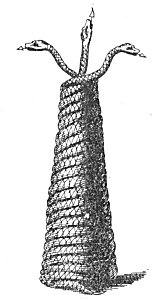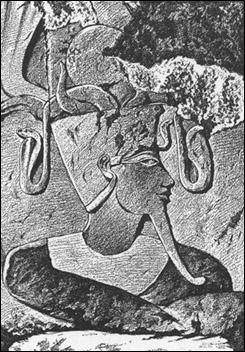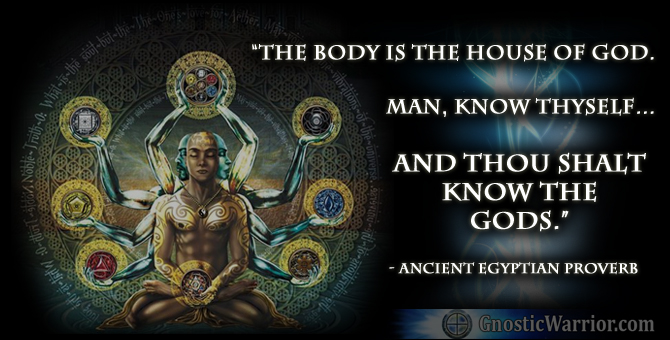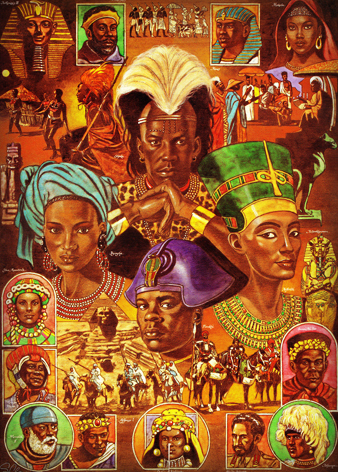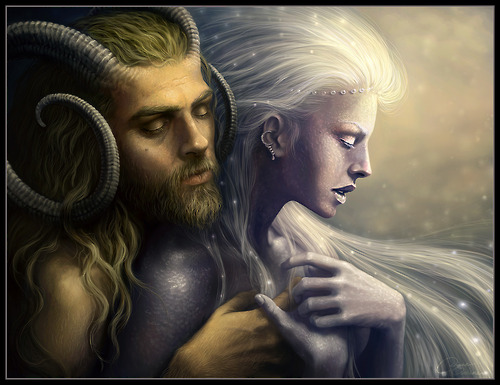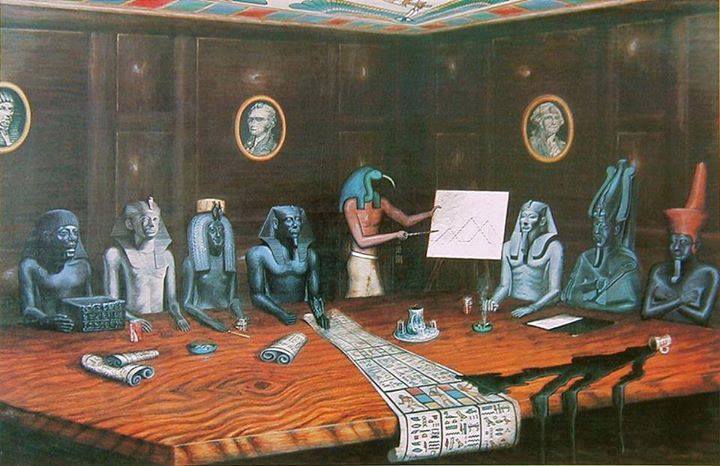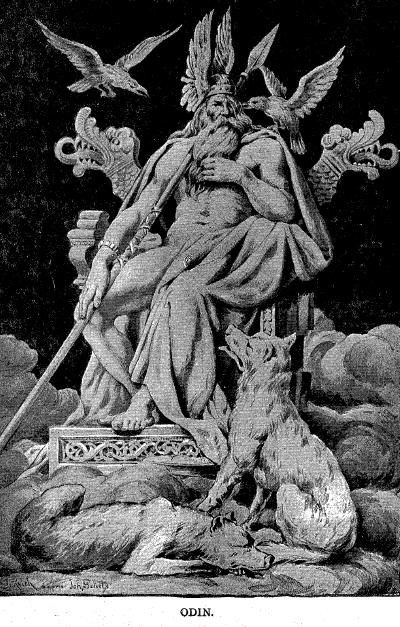From the Atlanteans the world has received not only the heritage of arts and crafts, philosophies and sciences, ethics and religions, but also the heritage of hate, strife, and perversion. The Atlanteans instigated the first war; and it has been said that all subsequent wars were fought in a fruitless effort to justify the first one and right the wrong which it caused. Before Atlantis sank, its spiritually illumined Initiates, who realized that their land was doomed because it had departed from the Path of Light, withdrew from the ill-fated continent. Carrying with them the sacred and secret doctrine, these Atlanteans
p. 35
established themselves in Egypt, where they became its first “divine” rulers. Nearly all the great cosmologic myths forming the foundation of the various sacred books of the world are based upon the Atlantean Mystery rituals.
THE MYTH OF THE DYING GOD
The myth of Tammuz and Ishtar is one of the earliest examples of the dying-god allegory, probably antedating 4000 B. C. (See Babylonia and Assyria by Lewis Spence.) The imperfect condition of the tablets upon which the legends are inscribed makes it impossible to secure more than a fragmentary account of the Tammuz rites. Being the esoteric god of the sun, Tammuz did not occupy a position among the first deities venerated by the Babylonians, who for lack of deeper knowledge looked upon him as a god of agriculture or a vegetation spirit. Originally he was described as being one of the guardians of the gates of the underworld. Like many other Savior-Gods, he is referred to as a “shepherd” or “the lord of the shepherd seat.” Tammuz occupies the remarkable position of son and husband of Ishtar, the Babylonian and Assyrian Mother-goddess. Ishtar–to whom the planer Venus was sacred–was the most widely venerated deity of the Babylonian and Assyrian pantheon. She was probably identical with Ashterorh, Astarte, and Aphrodite. The story of her descent into the underworld in search presumably for the sacred elixir which alone could restore Tammuz to life is the key to the ritual of her Mysteries. Tammuz, whose annual festival took place just before the summer solstice, died in midsummer in the ancient month which bore his name, and was mourned with elaborate ceremonies. The manner of his death is unknown, but some of the accusations made against Ishtar by Izdubar (Nimrod) would indicate that she, indirectly at least, had contributed to his demise. The resurrection of Tammuz was the occasion of great rejoicing, at which time he was hailed as a “redeemer” of his people.
With outspread wings, Ishtar, the daughter of Sin (the Moon), sweeps downward to the gates of death. The house of darkness–the dwelling of the god Irkalla–is described as “the place of no return.” It is without light; the nourishment of those who dwell therein is dust and their food is mud. Over the bolts on the door of the house of Irkalla is scattered dust, and the keepers of the house are covered with feathers like birds. Ishtar demands that the keepers open the gates, declaring that if they do not she will shatter the doorposts and strike the hinges and raise up dead devourers of the living. The guardians of the gates beg her to be patient while they go to the queen of Hades from whom they secure permission to admit Ishtar, but only in the same manner as all others came to this dreary house. Ishtar thereupon descends through the seven gates which lead downward into the depths of the underworld. At the first gate the great crown is removed from her head, at the second gate the earrings from her ears, at the third gate the necklace from her neck, at the fourth gate the ornaments from her breast, at the fifth gate the girdle from her waist, at the sixth gate the bracelets from her hands and feet, and at the seventh gate the covering cloak of her body. Ishtar remonstrates as each successive article of apparel is taken from her, bur the guardian tells her that this is the experience of all who enter the somber domain of death. Enraged upon beholding Ishtar, the Mistress of Hades inflicts upon her all manner of disease and imprisons her in the underworld.

Moe is the founder of GnosticWarrior.com. He is a father, husband, author, martial arts black belt, and an expert in Gnosticism, the occult, and esotericism.

